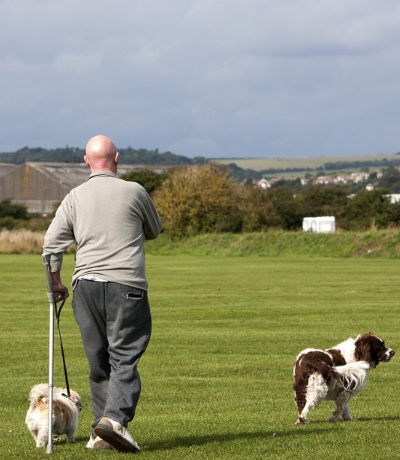Increasing physical activity and exercise are an important part of recovering from a cardiac event. There are lots of positive effects for both physical and psychological wellbeing, and these can significantly reduce the risk of future problems.

Building up activity and exercise following a cardiac event can be challenging and sometimes even a bit scary. The cardiac rehabilitation team can provide you with the knowledge and support you may need to achieve this.
There are differences between exercise and activity and it is important to consider this when planning your routine – in simple terms:
Exercise can be defined as something that makes your heart beat faster. To exercise your heart, you have to maintain a raised heart rate for a minimum of 10 minutes at a time, e.g. walking at a moderate pace.
Activity is more like walking in the supermarket while you do your shopping, or doing your housework. It is often more stop/start in nature and can be described as functional activity. This kind of activity is beneficial as it helps to keep you moving throughout the day.
This NHS information page highlight the importance of combining both activity and exercise.
The minimum recommendations for exercise are 30 minutes of moderate exercise most days – this is something that can be built up to using a pacing approach. Here you will find NHS physical activity and exercise guidelines for adults aged 19-64 and NHS physical activity and exercise guidelines for adults aged 65 and over.
It is important to remember that there is no one exercise or activity that suits everyone. Something that is enjoyable, and suits your lifestyle and routine is much more likely to be continued in the longer term.
Part of your Cardiac Rehabilitation assessment will be about your previous and current levels of exercise and activity and your cardiac rehab practitioner will support you to set some achievable goals using a pacing approach information about which you can in the Pacing Handout. There are many ways to get active and we will guide you in choosing what’s right for you. There are many ways to get active and we will guide you in choosing what’s right for you. There are many options to choose from and your health professional will explain what is available for you.
Why exercise is important ?
Here is some information that explains why it is important to exercise and stay active
- What happens when you exercise – muscles, including the heart muscle need more blood and oxygen when you exercise – you supply this to yourself by breathing faster and your heart /pulse rate goes up to supply the extra oxygenated blood to the body. It is normal to feel that you breathe faster when you increase activity and exercise, and you will notice that you feel warmer as you burn up the extra oxygen as fuel.
- How exercise can help – exercise has many health benefits, most importantly to reduce the risk of future heart and health problems. Getting fitter means you can do more of what you want to do, improving your quality of life.
- How you can monitor the amount of exercise you do – learning your own responses to exercise and activity will help you assess whether you are exercising at the correct level. Breathing faster and feeling warmer are normal responses, although you should still be able to speak comfortably while you exercise and the effort should feel moderate.
- Choosing an exercise routine – it is important to choose something you enjoy. It can be helpful to choose a variety, and making exercise part of your daily routine can help long term compliance.
- Ideas for long term exercise plans and maintenance – everyone is different, you may find something as simple as walking everyday can be enough, however there are many opportunities in the community for joining groups and classes to exercise and this can help maintain your commitment and motivation to maintain your routine.
See the Exercise Handout for more detailed information on why exercise is so important
If your cardiac rehab practitioner wants you to do start our Home Exercise Programme (HEP) they will discuss this with you and direct you to the resource area where you will be able to use a password to access the relevant section.
CRL Exercise programmes

Your cardiac rehab practitioner may prescribe you a home based exercise programme which is appropriate for you. If this is the case they will provide you with a password to allow you to view and follow the Cardiac Rehabilitation Lothian Exercise Programme videos.
Here are our frequently used home stretching plan and home strengthening plan. We advise you to speak to your cardiac rehab practitioner before starting this.
Our partners and other local facilities
Your cardiac rehabilitation specialist can refer you to local leisure facilities where there is a selection of classes for people with different health conditions:-
MAC, Midlothian Active Choices
ALISS (A Local Information System for Scotland) can help you find lots of opportunities in your local area














